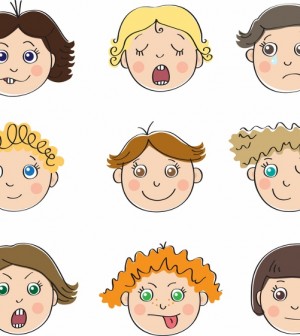- Belgium comes to Yamashita Park
- Residential Villa in Phuket Entices Remote Workers With Long-Stay Rates
- Rare pieces of French glass art at the Mirai Museum of Art
- Feast on fresh fish and seafood at the 2024 ‘Sakana’ Festival
- Would you like to ride in a Louis Vuitton gondola lift?
- Naked Snow Aquarium
- Festive lights at Yomiuriland will get you feeling the holiday vibes
Understanding Your Child’s Temperament and its Role in Determining Your Child’s Personality

“We do not MAKE our children who they are. Instead we DISCOVER who they are.”
The nature versus nurture argument about personality has always seemed a little futile to me. It’s a bit like debating whether a cake is the result of its ingredients or the baking process. Both are critically important steps which influence the outcome, much like nature and nurture do for personality.
Researchers such as Alexander Thomas and Stella Chess have divided personality up into two components – temperament and character. A child’s temperament describes those features which are already predetermined at birth (the pre-prepared ingredients). Character develops later and depends on a child’s environment, their experiences and the way in which they have been parented (or ‘baked’ to use the cake analogy). But back to temperament…
What kind of temperament your child is born with seems a bit like a lucky dip as we have no control over how the ingredients come together. These ‘ingredients’, according to Thomas and Chess, are the nine categories of temperament traits. Imagine nine dials, each with a LOW setting at one end, a HIGH setting at the other and a range in between. Long before birth each of these dials are fixed in position influencing how your child will interact with and react to people, places and events throughout his/her lifetime.
So what are these 9 Temperament Traits that influence children’s personalities?
1. ACTIVITY
Activity refers to how much physical energy your child has. A child born with high energy levels is often moving and is often well practiced in gross motor skills such as climbing and jumping. In contrast, a child born with lower activity levels might adapt more easily to highly structured environments and prefer activities which require little movement such as reading or puzzles.
2. REGULARITY or RHYTHMICITY
Does your child need to sleep, eat or toilet at the same time each day? Some children seem to be born with their own inbuilt clocks when it comes to these biological functions. For others, these events occur less predictably.
3. INITIAL REACTION
How does your child approach new situations? Does he charge in boldly or does he cling to your leg? Do you have a child who approaches strangers without hesitation or does she hang back watchfully before interacting with new people?
4. ADAPTABILITY
This trait refers to how easily (or otherwise) your child adjusts to changes in their environment or routine (this isn’t the same as the ‘initial reaction’ described above – it refers more to the transition period that follows).
5. INTENSITY
How intense are your child’s emotional responses? Is she someone who ‘goes from 0 to 100 in an instant’ or has she always been relatively calm and contained? This intensity of emotions relates to both ‘positive’ (such as happiness and excitement) and ‘negative’ emotions (such as sadness and rage).
6. MOOD
This trait refers to whether your child’s overall demeanour is generally happy and positive or whether he/she tends towards a more negative outlook on life. (Is he/she a ‘cup half full’ or ‘cup half empty’ sort of kid?)
7. DISTRACTIBILTY
Is your child usually able to focus on an activity despite external distractions or does she tend to get sidetracked? Better still, do the 101 random items that she passes on her way up to the bathroom each urgently need to be played with? (As an aside, it’s useful to know that books and puzzles are much better indicators of your child’s distractibility than TV or computer games. Even kids with Attention Deficit Hyperactivity Disorder (ADHD) are often able to sit in front of computer games for long periods. This seems to relate to the way the screen image rapidly shifts and changes, requiring less attentional capacity).
8. PERSISTENCE AND ATTENTION SPAN
Does your child tend to stick with a task, even when it gets challenging or does she usually give up and move on? While this can still be influenced to an extent by our parenting style and environment, persistence as a trait is considered to be determined even before birth.
9. SENSORY THRESHOLD
Some children are very sensitive to stimuli around them such as noises, lights, textures and smells. They can also be very sensitive at picking up on the moods of those around them while others, with higher sensory thresholds, seem better able to ignore these stimuli in their environment. Now that you’ve read through the list of temperament traits, consider the following:
1. Which of these traits do you notice most in your child or children?
2. Which of these do you identify in yourself and your partner? As parents we’re unable to ‘pre-order’ our child’s temperament. Sometimes the temperaments of parents and their children seem to fit really well together. For other families, they are the source of endless conflict. It would undoubtedly be challenging to have a highly active child living with relatively low energy parents in a cramped apartment. But it’s important to remember that a child can’t change their temperament any more than they can change their eye colour. An understanding of the aspects of your child’s personality which are beyond their control can lead you to a greater understanding and acceptance of your child, as they are. Of course, families with more than one child may also have kids with very different temperaments from each other. Again this can pose difficulties but it’s incredibly important not to label siblings as being the ‘good’ or ‘bad’ child based on traits that they cannot change. Consistent boundaries and age-appropriate expectations should apply to all children but your parenting approach may need to be flexible and adapted to each of your uniquely individual children depending on their temperaments. Because it’s not all a done deal. Remember, a child’s personality is not solely determined by hardwired temperament traits. Just like a cake rises up perfectly when cooked at the right temperature, the environment in which a child is raised will also influence the way a child learns to think, feel and behave. By being flexible in your parenting style you can be open to what works for your unique child. It’s possible that the way you were parented might not be the best approach to take. Allow yourself to learn from your child, see the world through their eyes and enjoy the new experiences and perspectives that they bring into your life. And this, I think, is what’s most important – it shouldn’t be up to our children to change the unchangeable. We, as parents, need to be the ones who adapt so that we can bring out the best in our kids. For some of us, this involves letting go of long-held ideals about the children we thought we would have or the parents we imagined we might be. Instead, step back and consider how you can best guide your child to reach his/her full potential. Respect the child you have, as they’ve been born to you, and strive through loving, responsive parenting to bring out their best.

About Dr. Kaylene Henderson Dr Kaylene Henderson is a Child & Adolescent Psychiatrist and Founder of Little Children Big Dreams which provides help for children who are afraid of the dark or scared of monsters – www.littlechildrenbigdreams.com. Dr Henderson, a mother of three, also provides parents with free online parenting tips and child psychiatry information on her Little Children Big Dreams website blog and on her popular Facebook Page – www.facebook.com/drkaylenehenderson















